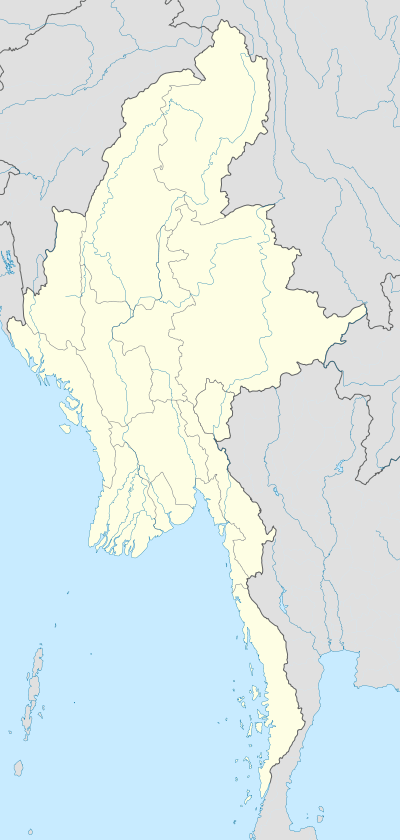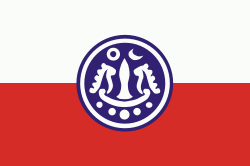Waithali
| Waithali ဝေသာလီမြို့ | |
|---|---|
 Waithali Location in Burma | |
| Coordinates: 20°30′0″N 93°20′0″E / 20.50000°N 93.33333°E | |
| Country |
|
| Division | Rakhine State |
| Time zone | MST (UTC6:30) |
Waithali (Burmese: ဝေသာလီမြို့, pronounced: [wèθàlì mjo̰]), located in today's northern Rakhine State, Myanmar, was the capital of the Waithali Kingdom from 788 to 1018.[1] The former capital site is approximately 70 kilometres (43 mi) north-east of Sittwe, and east of Ram Chaung, a tributary of the Kaladan river. Like much of northern Rakhine State, Waithali is in a hilly locale. Like its predecessor, Dhanyawadi, the former capital site has fallen into ruin and much of it is now deserted. Only a few temples and traces of the old city wall remain. The site is about an hour's bus ride from Mrauk U.
Etymology
Waithali is the Burmese language pronunciation of the Pali word Vesali.
History
It has been estimated that the centre of power of the Arakanese world shifted from Dhanyawadi to Waithali in the 6th century AD. Although it was established later than Dhanyawadi, Waithali is the most Indianized of the four Arakanese kingdoms to emerge. Like all of the Arakanese Kingdoms to emerge, the Kingdom of Waithali was based on trade between the East (Pyu city-states, China, the Mons), and the West (India, Bengal, and Persia).
According to the Anandacandra Inscription, carved in 729 AD, the subjects of the Waithali Kingdom practiced Mahayana Buddhism, and proclaims that the ruling dynasty of the kingdom were descendants of the Hindu god, Shiva.
Some important and badly damaged life-size Buddha images were recovered from Letkhat-Taung, a hill east of the old palace compound. These statues are invaluabe in helping to understand the Waithalian architecture, and also the extent of Hindu influence in the kingdom.
According to local legend, Shwe-taung-gyi (lit. Great Golden Hill), a hill north-east of the palace compound may be a burial place of a 10th-century Pyu king.
The rulers of the Waithali Kingdom were of the Chandra dynasty, so called because of their usage of Chandra on the Waithali coins. The Waithali period is seen by many as the beginning of Arakanese coinage - which was almost a millennium earlier than the Burmese. On the reverse of the coins, the Srivatsa (Arakanese/Burmese: Thiriwutsa), while the obverse bears a bull, the emblem of the Chandra dynasty, under which the name of the King is inscribed in Sanskrit.

The Kingdom eventually declined after the immigration of the Tibeto-Burmese (the Burmese) from Tibet in the 10th century.
See also
- Rakhine State
- Dhanyawadi
- Mrauk U
References
- ↑ Lt. Gen. Sir Arthur P. Phayre (1883). History of Burma (1967 ed.). London: Susil Gupta. pp. 298–299.
External sources
- The Land of the Great Image - Being Experiences of Friar Manrique in Arakan by Maurice Collis
Coordinates: 20°35′10″N 93°11′26″E / 20.5861111211°N 93.1905555656°E